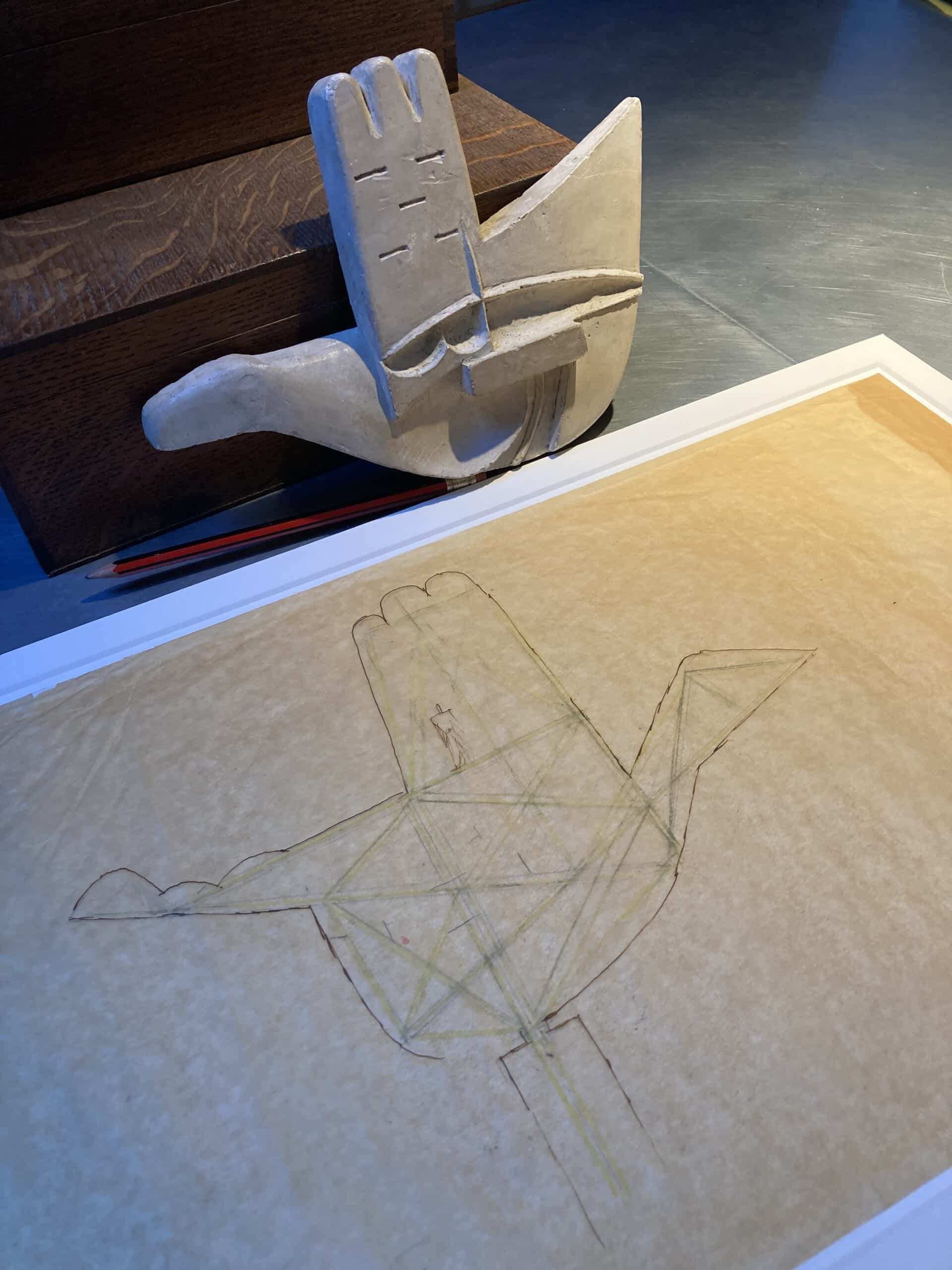Drawing Powers: Introduction
This text is the first in a series of five in which Fernando Poeiras (ESAD.CR/LIDA), explores the different powers of drawing within architectural design projects. Each text is illustrated with examples from the Drawing Matter Collection.
There is an enormous difference between seeing a thing without a pencil in your hand and seeing it while drawing it.
– Paul Valéry
One of the most valuable uses that a collection of drawings and models can have for practitioners is to enhance their own skills and practice. In drawing theory we can seek to surpass the limits of individual practice by experiencing such a collection in a broader way, tracing the diverse paths it opens up, and using the resulting map to review what we already know, or thought we knew, about drawing practice. Thus, this is a promising area of study for the theory of drawing in design, and begs the question: how does drawing increase the capacity to understand, imagine, and validate a design?
Despite their diversity, all physical design media (such as drawings, maquettes, models, simulations, prototypes, etc.) enable a process of interaction and involvement.

In the case of drawing, this is a process in which one both acts, and is acted upon. For example, among other interactions in the process, the drawer draws, but what is drawn also has an effect on the drawer.
As sentient beings, we are fully involved in interacting with others and with our world. [1] An analogous process occurs in drawing. In the overall drawing process, many of the different acts of thinking – from imagining to analysing – are inseparable from their interaction with the body of the person drawing. We can develop Arendt’s insight through Deleuze’s understanding of the body. [2] To put it briefly: in different interactions our body experiences different ‘affects’ and, accordingly, develops different interaction ‘organs’. This powerful understanding of bodily experiences focuses our attention on what happens to bodies while drawing, and on what ‘organs’ are developed in the process of drawing.
First, several enhancements take place in the drawer’s body. As many practitioners and theorists have remarked, drawing fosters a more acute sense of vision, and the maquette amplifies the sense of touch. What is less noted is the fact that the whole body is involved in an all-encompassing sentient process. Thus, every perception, feeling, or thought can equally be exercised, enhanced, and transformed while drawing.
This sentient process includes the suspension of immediate involvement, i.e. drawing also leads the drawer to pause and distance themselves from it, allowing more detached critical observation and thinking to take place. Those drawing also deliberately suspend their immediate interactive involvement in the process. This latter is the focus of theories that only stress types of intentionality in the design process, and in the designer’s thinking and pursuit of identifiable goals in the project’s design. This reduction of sentient processes to intentional operations needs to be re-assessed.
In some cases, design media are used to stimulate a more direct and immediate involvement, thereby triggering other acts of understanding and imagining. So, with any medium, it is necessary to consider not only its physical nature, but also how it is sentiently experienced, and whether that medium and its use is more directed to one form of sentience or another.
It is not just our mental capacities that are enhanced by our sentient interaction with different mediums. This learning of bodily thinking has (enduring) consequences that go beyond the designer, to the designed objects and to buildings themselves. Design mediums can also suspend some limits of reality. This is to say that, through these mediums, each successful study, essay, or experience operates on a selected aspect of that reality, making it more significant and more manageable, and unshackling the imagination and understanding of the designer, although (in different ways) it is always subject to validation. [3]
Let us return to our initial question: how does drawing increase the capacity to understand, imagine and validate a design? To answer it, we will consider only design drawings, excluding other types of drawing such as presentation drawings. We will also consider only architectural drawings, although this study applies to drawing for most areas of design (such as product design).
We have identified three aspects of drawing practice that exercise our sentient faculties in three sufficiently distinct ways:
- ‘The object in the drawing’: The problems and solutions explored by drawing as circumscribed by the scope of representation.
- ‘The drawing in the object’: The problems and solutions explored by drawing as circumscribed by drawing languages, or more accurately, by drawing styles and drawing crafts.
- ‘The drawing-object’: The problems and solutions of a design project as internalised and explored by a process of experimentation through drawing.
These distinctions serve to make visible different powers of drawing. There is no clear boundary between them, as they are all present in practice, but some of these powers are more prevalent at different times in the design process, while others are favoured in certain strategic drawing practices or even personal styles, without falling into the domain of idiosyncrasy. Thus, essentially, this series of essays will seek to understand the different effects of these drawing powers on the design project and on the draughtsman.
Notes
- Hannah Arendt, The Life of the Mind: Vol. 1. Thinking (San Diego: Harcourt Brace Jovanovich, 1971).
- Gilles Deleuze, Spinoza: Practical Philosophy (San Francisco: City Lights Books, 1988).
- Étienne Souriau, Vocabulaire d’Esthétique (Paris, Presses Universitaires de France, 1993).

– Fernando Poeiras